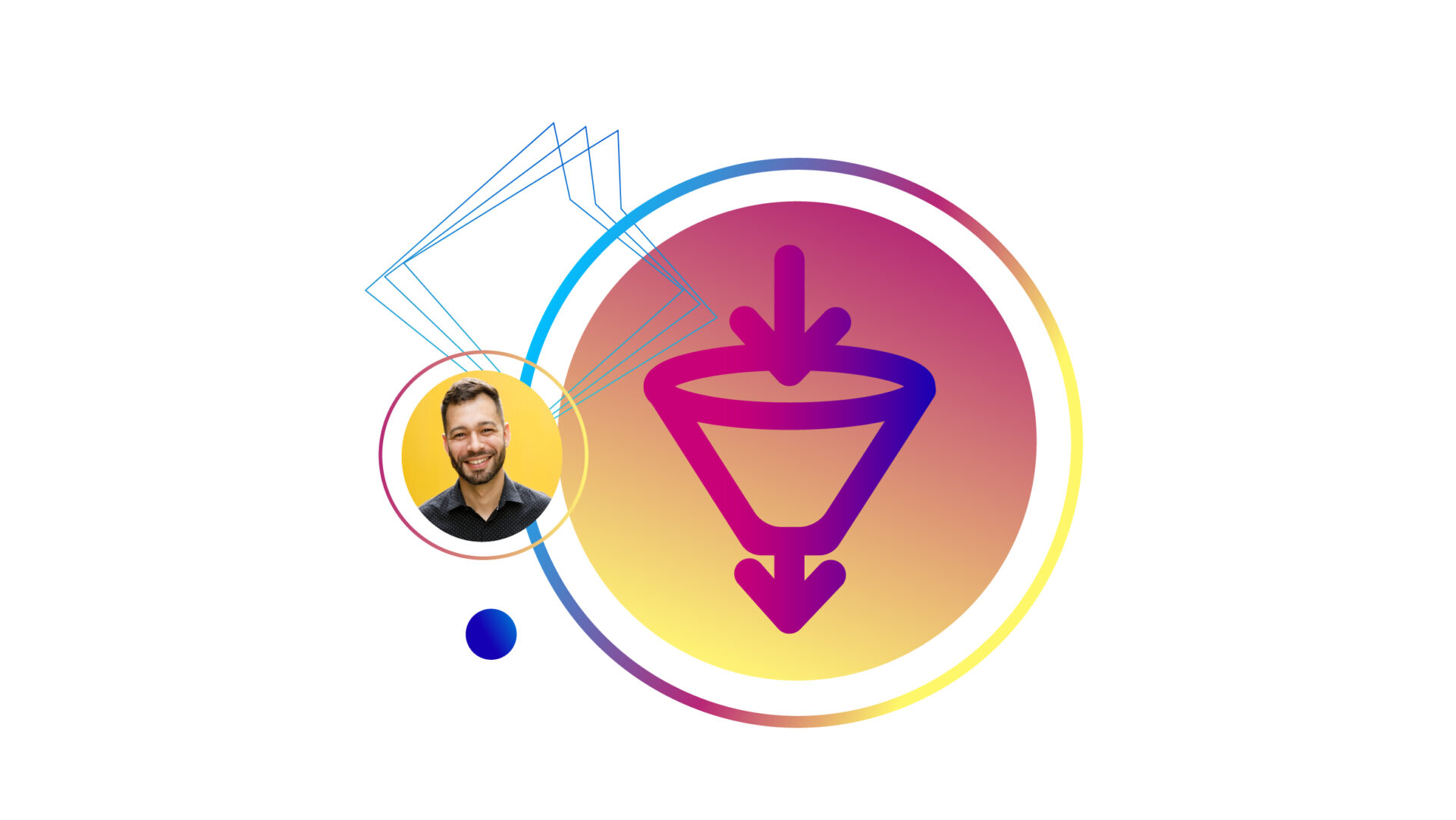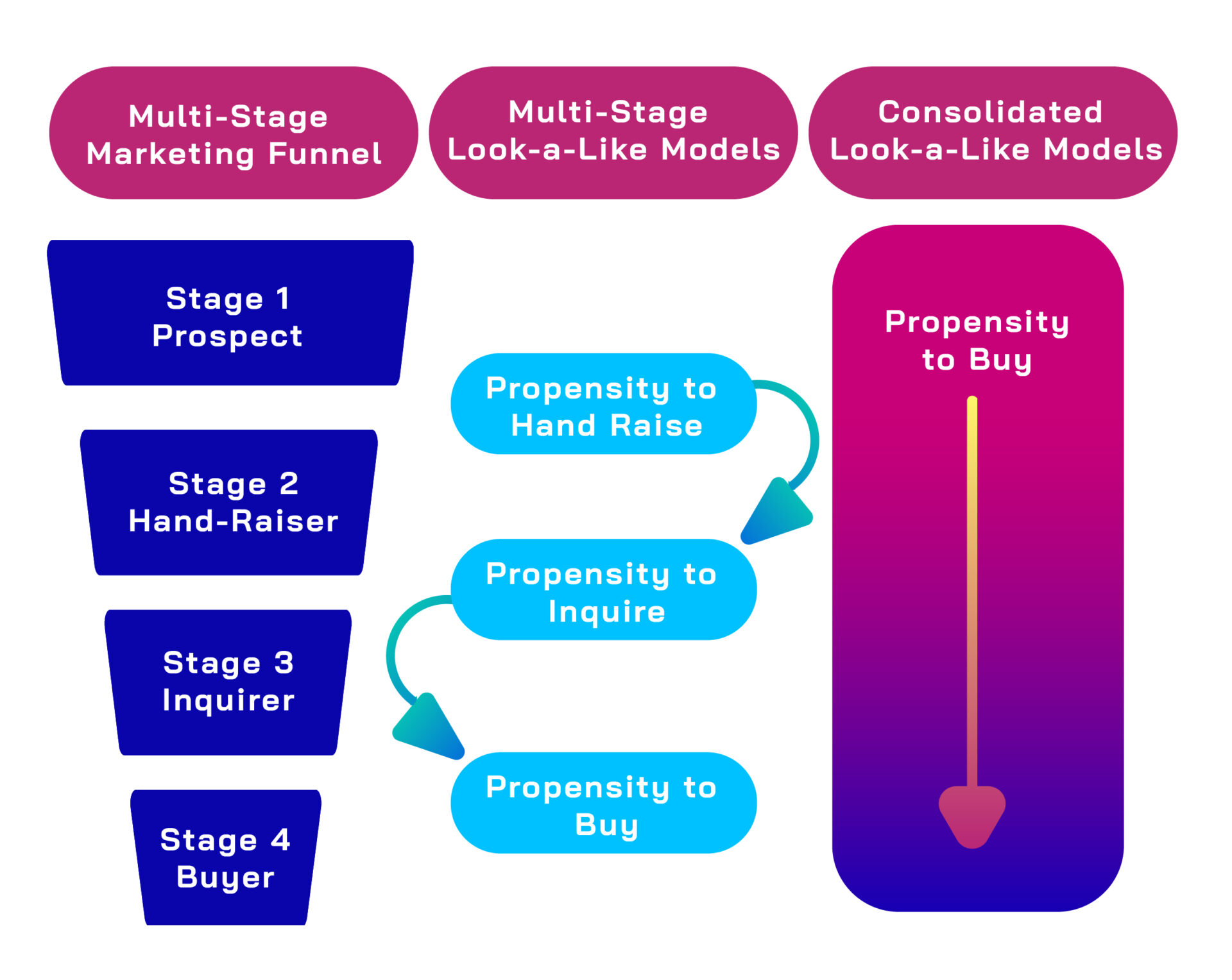
Articles | October 8, 2021 | 3 min read
Data-Driven Intelligence for Full-Funnel Marketing
Marketing, as it relates to customer lifecycle management, maps a customer journey from the prospecting stage to becoming a high-value, loyal customer. This journey is frequently represented as moving through the marketing funnel.
At the top of the funnel, new prospects present opportunities for brands to reach them with brand awareness messaging. Moving through the funnel to the interest and consideration stages, these prospects may show interest in receiving initial brand communications and act as hand-raisers to learn more about the product or service presented. These hand raisers would then need to be further shepherded through their journey towards conversion and beyond to be turned into a repeat purchaser, better known as a loyal customer.
The challenge this poses for marketers, however, is separating noise from quality prospects. As such the business question at hand becomes ‘how does one decide on whom to spend marketing dollars?’ There are a few marketing levers that can be used to address this challenge.
This is one of the best ways to qualify who among the prospect universe has the best chance of moving through the funnel. The characteristics that may make someone a prime prospect may not be predictive of how likely they will move into the next stage of the marketing journey. Understanding these characteristics will go a long way in tailoring messages, channels, and offers to prospects so that they are set up to move to the next stage of the funnel.
For instance, consider this 4-stage funnel where an individual needs to pass from being a prospect to becoming a hand raiser, then to an inquirer and ultimately to a buyer.

At each stage of this funnel, the attributes, behaviors, and preferences of the individual that will determine their likelihood to make it to the next stage can easily change. For instance, an individual with a certain persona (e.g., a middle–aged female who lives in a rural area) may be the right target for prospecting and may be very likely to become a hand raiser. However, out of such hand-raisers, there may be individuals in a specific life stage with demonstrated brand preferences, media consumption preferences ,and other attributes that make them more likely to go to the next stage of the funnel (inquiry stage). Of those who go through with the inquiry, there may be individuals who have exhibited specific interests who are more likely to buy the product or service.
Looking at these characteristics one at a time has its benefits in terms of being able to construct audiences quickly. However, understanding the change in high likelihood personas as they move through the funnel provides better marketing levers such as:
Multivariate modeling can incorporate several attitudes, preferences, and attributes of individuals into an algorithm and assign them a likelihood score. These models can then be hyper-tuned to the funnel stage they are about to enter. As it relates to our marketing funnel above, look-a-like modeling techniques can be applied to identify which individuals have a high propensity to move from the prospect to the hand raiser stage, from hand raiser to inquirer stage, and ultimately into the buyer stage.
Such multi-stage modeling presents marketers with the granularity needed to limit marketing efforts only towards high-likelihood audiences. An additional benefit of stage-specific look-a-like models is that they present an opportunity to investigate potential leakage points and to improve flow rates. These multi-stage models can also be combined to provide the ultimate likelihood of a prospect converting into a buyer while incorporating the ‘in-between stage’ propensities.
The insights that are driven from profiles of high–propensity converters at each stage can either validate or challenge existing assumptions about a brand’s customer profile.
For instance, a recent multi-stage modeling exercise for a mid-size company in the hospital and health care industry revealed that the persona of high-propensity prospects in the first stage of the funnel is very different than the conventional wisdom existing within the company of their customer persona. While the results were counterintuitive as a consumer progressed down the funnel, we found that the ultimate conversion took place at Stage 4. These insights brought to light the need for the company to diversify their targeting efforts to cater to the persona that is likely to become a hand-raiser and customize their customer journey along the funnel to cater to potential shifts in the customer base.
In conclusion, multi-stage look-a-like modeling not only provides insights for rightfully allocating marketing dollars but also highlights other preferences for individuals to pass through the funnel stages.
Understanding the marketing funnel
At the top of the funnel, new prospects present opportunities for brands to reach them with brand awareness messaging. Moving through the funnel to the interest and consideration stages, these prospects may show interest in receiving initial brand communications and act as hand-raisers to learn more about the product or service presented. These hand raisers would then need to be further shepherded through their journey towards conversion and beyond to be turned into a repeat purchaser, better known as a loyal customer.
The challenge this poses for marketers, however, is separating noise from quality prospects. As such the business question at hand becomes ‘how does one decide on whom to spend marketing dollars?’ There are a few marketing levers that can be used to address this challenge.
Leaning on time-tested, data-driven techniques
This is one of the best ways to qualify who among the prospect universe has the best chance of moving through the funnel. The characteristics that may make someone a prime prospect may not be predictive of how likely they will move into the next stage of the marketing journey. Understanding these characteristics will go a long way in tailoring messages, channels, and offers to prospects so that they are set up to move to the next stage of the funnel.
For instance, consider this 4-stage funnel where an individual needs to pass from being a prospect to becoming a hand raiser, then to an inquirer and ultimately to a buyer.

At each stage of this funnel, the attributes, behaviors, and preferences of the individual that will determine their likelihood to make it to the next stage can easily change. For instance, an individual with a certain persona (e.g., a middle–aged female who lives in a rural area) may be the right target for prospecting and may be very likely to become a hand raiser. However, out of such hand-raisers, there may be individuals in a specific life stage with demonstrated brand preferences, media consumption preferences ,and other attributes that make them more likely to go to the next stage of the funnel (inquiry stage). Of those who go through with the inquiry, there may be individuals who have exhibited specific interests who are more likely to buy the product or service.
Looking at these characteristics one at a time has its benefits in terms of being able to construct audiences quickly. However, understanding the change in high likelihood personas as they move through the funnel provides better marketing levers such as:
- How to talk to these audiences
- Which channel would resonate best with them
- What kind of messaging would appeal to them
- What their pull is towards the product or service (e.g., price vs. exclusivity)
Multivariate modeling
Multivariate modeling can incorporate several attitudes, preferences, and attributes of individuals into an algorithm and assign them a likelihood score. These models can then be hyper-tuned to the funnel stage they are about to enter. As it relates to our marketing funnel above, look-a-like modeling techniques can be applied to identify which individuals have a high propensity to move from the prospect to the hand raiser stage, from hand raiser to inquirer stage, and ultimately into the buyer stage.
Such multi-stage modeling presents marketers with the granularity needed to limit marketing efforts only towards high-likelihood audiences. An additional benefit of stage-specific look-a-like models is that they present an opportunity to investigate potential leakage points and to improve flow rates. These multi-stage models can also be combined to provide the ultimate likelihood of a prospect converting into a buyer while incorporating the ‘in-between stage’ propensities.
The insights that are driven from profiles of high–propensity converters at each stage can either validate or challenge existing assumptions about a brand’s customer profile.
For instance, a recent multi-stage modeling exercise for a mid-size company in the hospital and health care industry revealed that the persona of high-propensity prospects in the first stage of the funnel is very different than the conventional wisdom existing within the company of their customer persona. While the results were counterintuitive as a consumer progressed down the funnel, we found that the ultimate conversion took place at Stage 4. These insights brought to light the need for the company to diversify their targeting efforts to cater to the persona that is likely to become a hand-raiser and customize their customer journey along the funnel to cater to potential shifts in the customer base.
Wrapping Things Up
In conclusion, multi-stage look-a-like modeling not only provides insights for rightfully allocating marketing dollars but also highlights other preferences for individuals to pass through the funnel stages.


